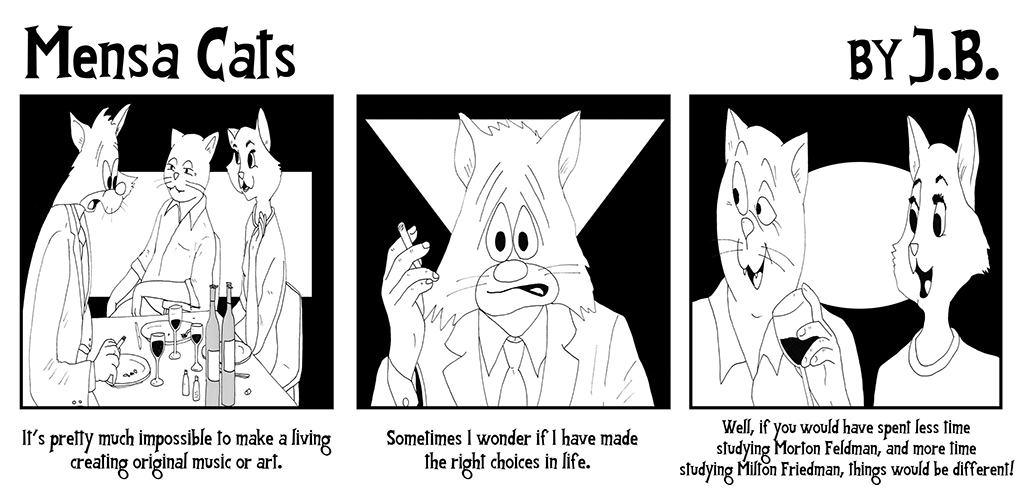 We at CatSynth have had quite a few unique musical experiences this season. Today we look back at another of them. In early February, the duo Martha and Monica (Hadley McCarrol on piano and Monica Scott on cello) performed Morton Feldman’s Patterns in a Chromatic Field in its entirety.
We at CatSynth have had quite a few unique musical experiences this season. Today we look back at another of them. In early February, the duo Martha and Monica (Hadley McCarrol on piano and Monica Scott on cello) performed Morton Feldman’s Patterns in a Chromatic Field in its entirety.
“In it’s entirety” is no small thing, as the piece consists of a single continuous 90-minute movement. It’s a feat of endurance for both the listeners and performers. But McCarrol and Scott made it seem straightforward and effortless. The performance began with very sparse but unsettled harmonies, with the texture increasing but then returning to sparseness again. It was only the final third that the texture and intensity grew towards a bolder and thicker sound. All the while, the music was constantly changing, repeating a few times, leaving a bit of space, and then going on to something else. This is consistent with Feldman’s interest in sound as something ephemeral and lost, and in creating a sonic space where memory is subverted or “disoriented.” The spaces in between the sounds are important as well, given moments of reflection and mental echoes.
All of this might make the piece seem daunting to listen to, especially at the length of a typical feature film. But the combination of space and disorientation were helpful, making it more like thoughts passing in a meditative space. The anxiety in a passage builds, but then dissipates – one acknowledges it and moves on. The passage of time itself became background noise and the sounds became more spatial than temporal. This effect might be more pronounced for someone like myself who sees shapes when listening to music, but I suspect other deep listeners had analogous experiences.
Unlike Feldman’s earlier pieces, this one was fully notated using common practice notation. This would both facilitate and make more challenging the process and playing and learning such a piece, where every note makes a difference. It was overall an impressive feat of musical performance, and glad I got to spend an afternoon hearing and seeing it.


 We at CatSynth have had quite a few unique musical experiences this season. Today we look back at another of them. In early February, the duo Martha and Monica (Hadley McCarrol on piano and Monica Scott on cello) performed Morton Feldman’s Patterns in a Chromatic Field in its entirety.
We at CatSynth have had quite a few unique musical experiences this season. Today we look back at another of them. In early February, the duo Martha and Monica (Hadley McCarrol on piano and Monica Scott on cello) performed Morton Feldman’s Patterns in a Chromatic Field in its entirety.